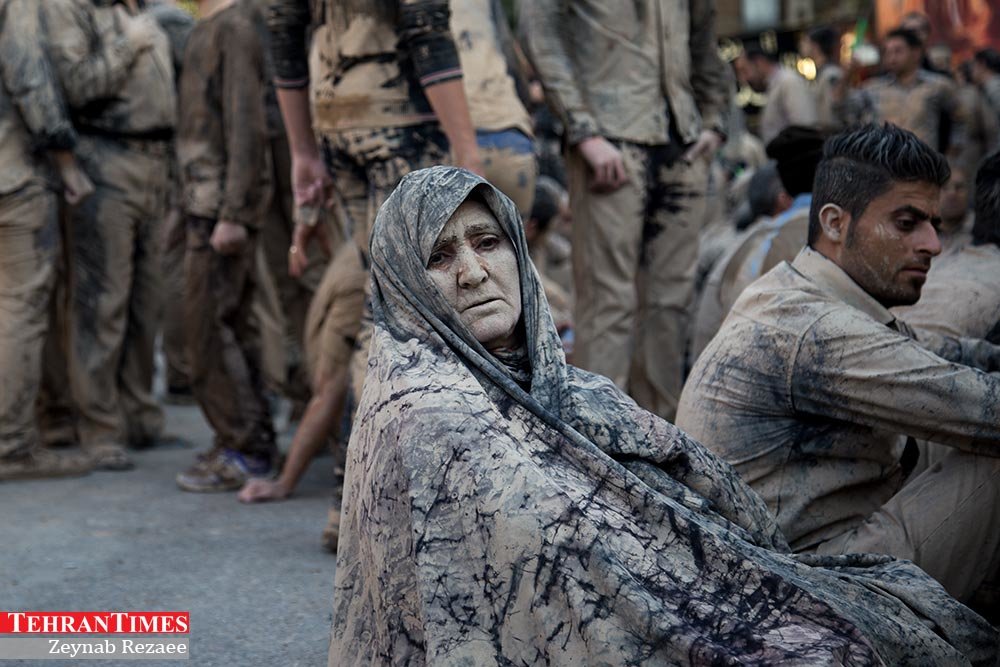Luristan’s elaborate Ashura rite

TehranTimes-This year the Tehran Times traveled to Khorramabad, the capital of Luristan province in western Iran, where they have an elaborate set of observations for the religious mourning occasion of Ashura.
This year, the Ashura fell on October 12. Having been born and raised in Khorramabad, I know well where to go and when to go. The day before, people, women in particular, grab 40 candle sticks each and go house to house bare-footed and wearing a veil to light one at a time, both as a show of sympathy with their third imam, Hussain ibn Ali, for whom the mourning is held, and as votive to have their wishes granted.
Later the day, people heap clay to be mixed with rose water in pools early next morning. They also set up huge piles of wood by the pools. The clay they cover themselves with, some do so by rolling in the clay pool, which is a sign of deep and sincere mourning. The heap of wood they set on fire by which to dry their bodies after they have been soaked in clay.
Then comes the time for the major act of mourning, which comprises of chanting sorrowful songs and hitting their chests or tapping their heads. As they do so, the clay from their chest rises to the sky, creating dramatic scenes in the morning sun.
From where they started, usually there are several start points or stations where people are clad in clay and start the mourning procession, groups walk to previously assigned gathering points to make their big and final congregations.
A scenic sight among the various groups is those that use duets of sorna, a local wind instrument, and dohol, a sort of drum. The instrument players are almost always the city’s traditional minstrels called “luti”, which migrated here from India many generations ago but mingled in as musicians and woodworkers.
The biggest gathering place in Khorramabad is the grounds which was until recently the city university campus. My wife cum photographer and I walk to the campus by defying the no-women police warning to take pictures of the main gathering.
What continued to catch our eyes most during the procession was not a sense of sadness or religious compulsion in people, but rather one of elation from seeing one belong to a big community that is performing a well-organized, big-sounding public ceremony.
Leave a Comment